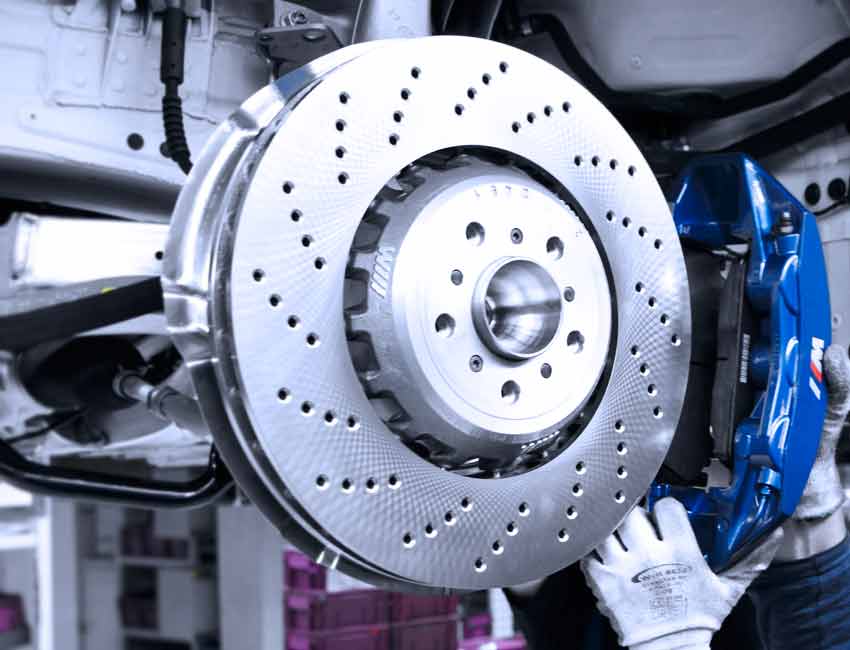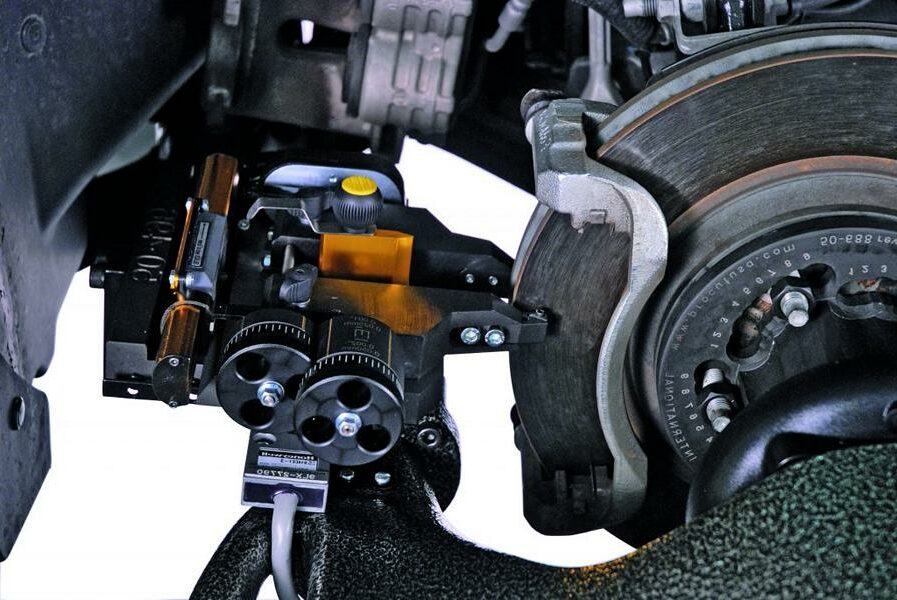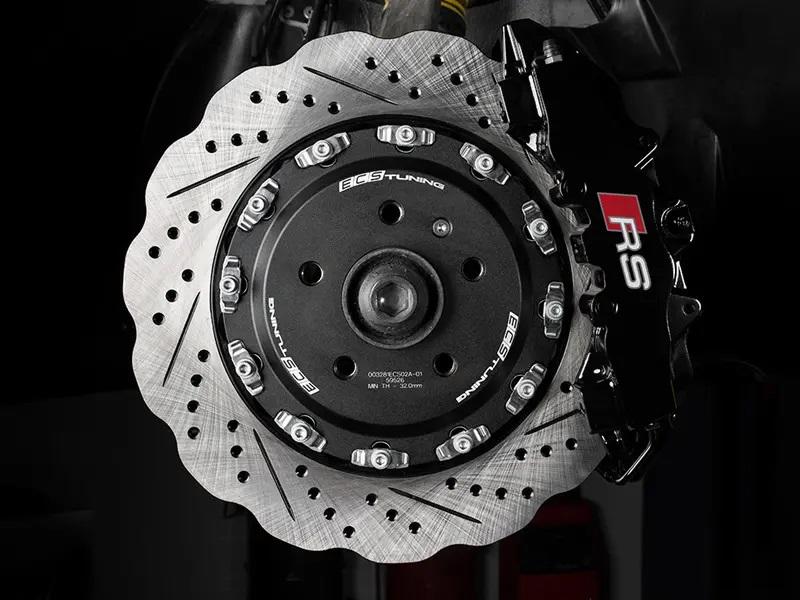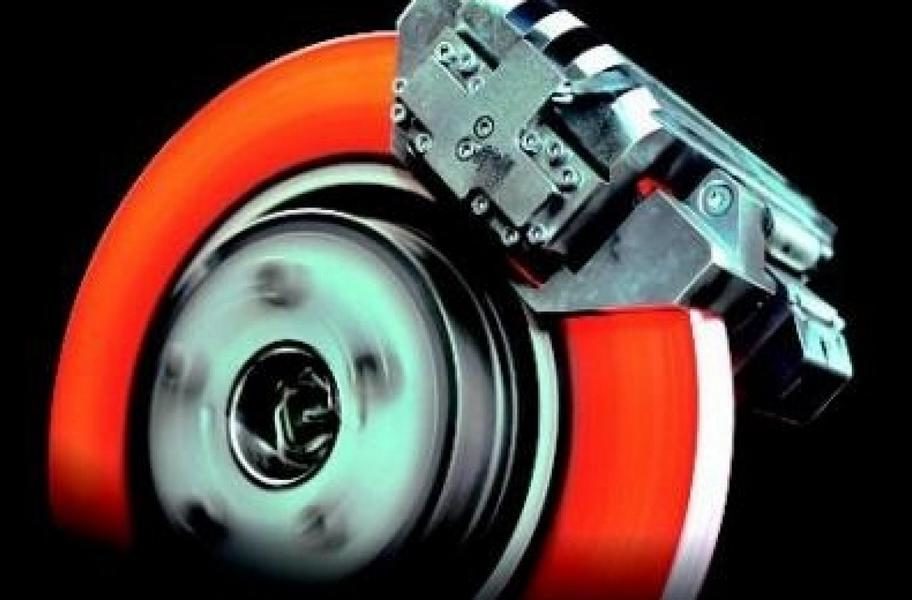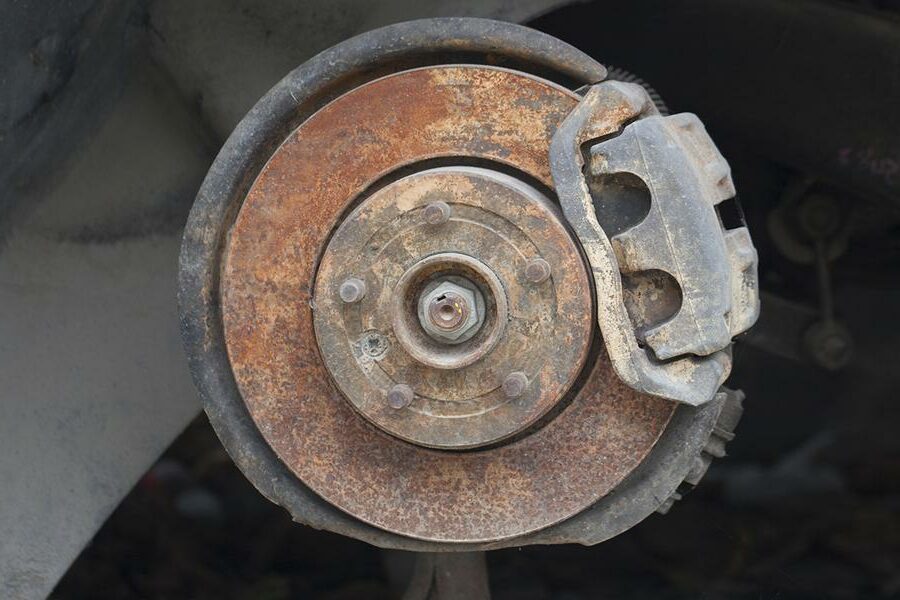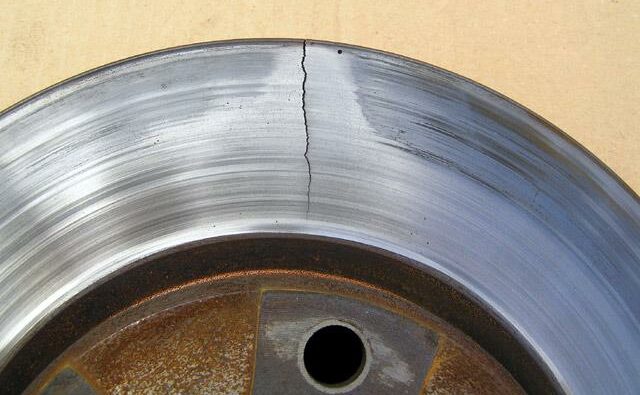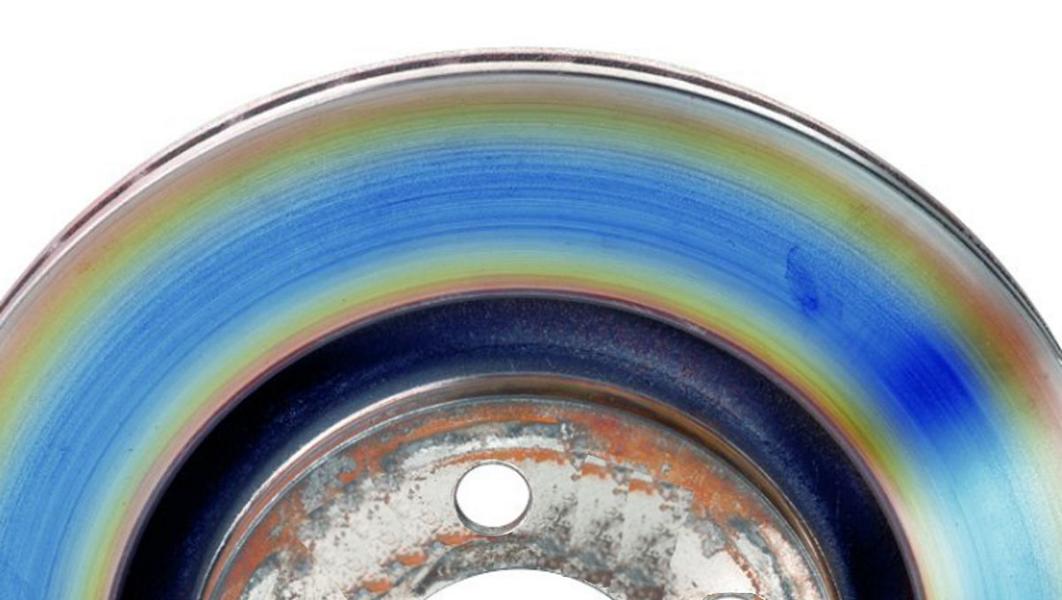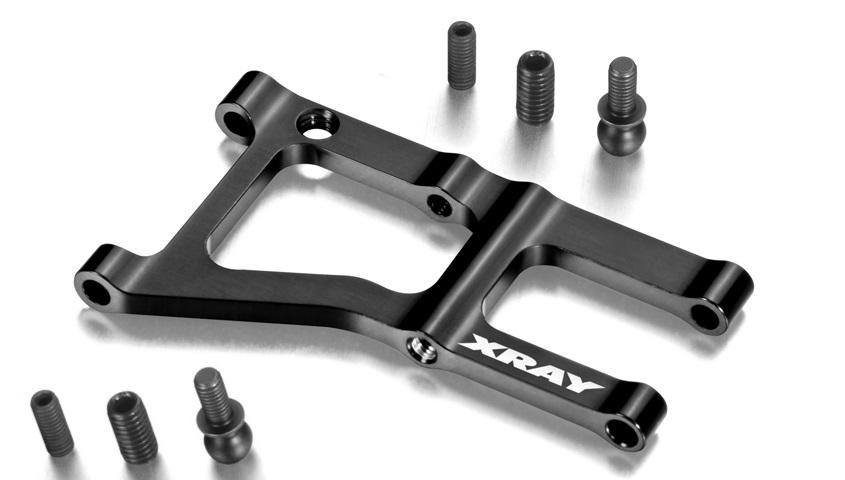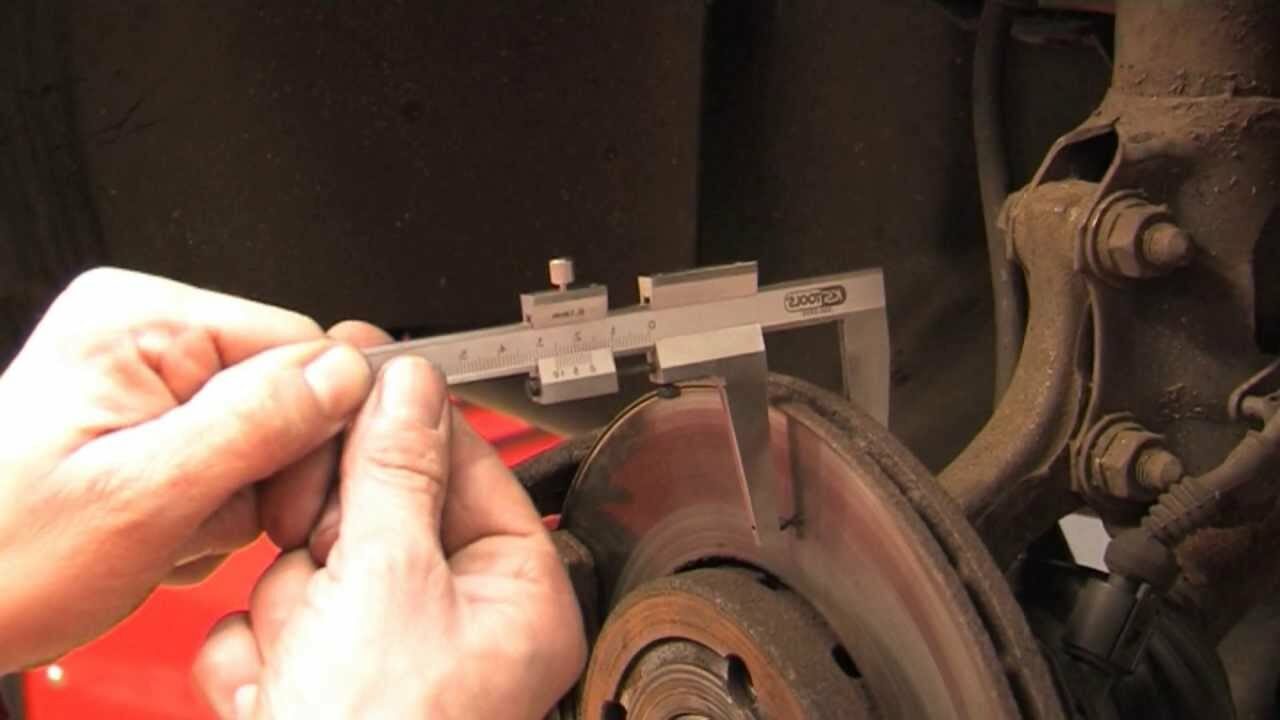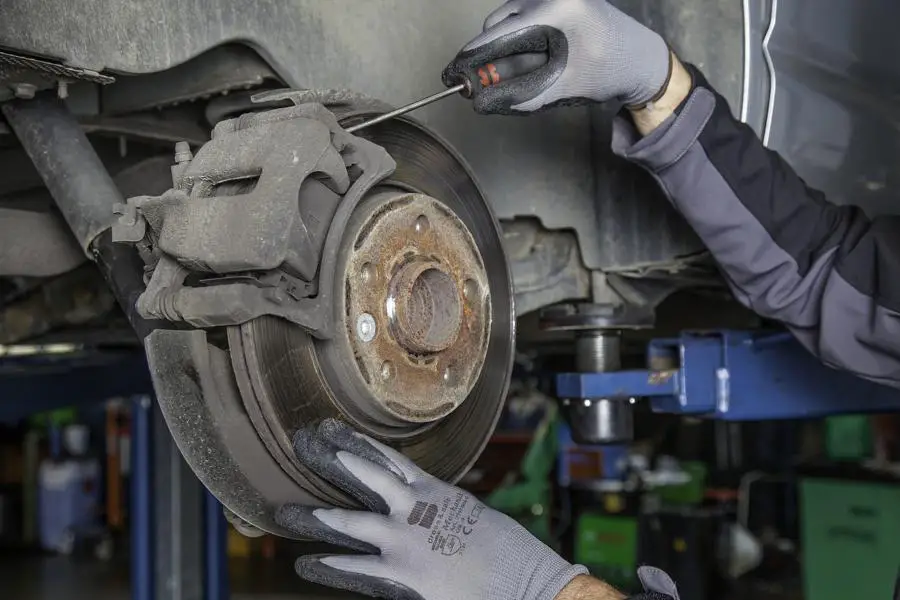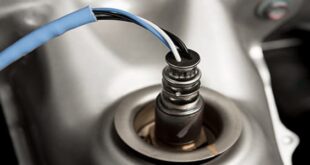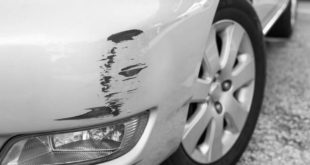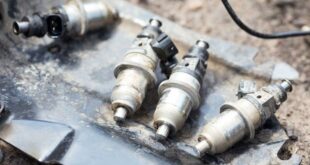Recently updated on January 27, 2022 at 10:36 am
If you notice that it suddenly jerks or rattles when you brake, it may be because the brake discs have become wavy. This need not necessarily be a cause for concern, however, because the fact that the brake discs have become wavy does not necessarily mean that you need a new set of discs. You may also be able to fix the problem with something that is not only simpler and faster, but also cheaper. Every time you brake, it puts extreme stress on the material. That is why the process can never take place without it at least a little Abrasion comes. For this reason, it can also come to a uneven Wear of the brake discs occurs. The resulting consequences should not be underestimated and can also be a serious danger: For example, a longer braking distance and vibrations that are transmitted to the vehicle and steering wheel when braking and which endanger other components in the long term.
Calibrating brake discs: overview
 Who is only interested in very specific areas around the topic Turning off the brake disc interested, you can use the following jump labels to navigate directly to the desired topic with just one click. And just as quickly you can return to this overview from the selected menu item with just one click. However, we recommend our readers to always read the entire article. Some menu items are only really comprehensible and understandable once the complete information article has been read.
Who is only interested in very specific areas around the topic Turning off the brake disc interested, you can use the following jump labels to navigate directly to the desired topic with just one click. And just as quickly you can return to this overview from the selected menu item with just one click. However, we recommend our readers to always read the entire article. Some menu items are only really comprehensible and understandable once the complete information article has been read.
- Why turn off the brake disc?
- Cost of new brake discs
- When can the damage to the brake discs be repaired?
- Are long downtimes problematic?
- When can damage no longer be repaired?
- What do you have to pay attention to before turning off?
- Be careful if you see a blue color!
- What else needs to be considered?
- What should you do with checking?
- What does it mean when the brakes are broken in?
- What does the minimum thickness of the brake discs mean?
- How do you clean the brake discs of the car?
- How much can the brake disc wear?
- How to recognize worn brake discs?
- How do you recognize worn brake pads?
- Tutorials for turning the brake discs
- Tutorials for checking and changing the brake pads
Why turn off the brake disc?
Answering the question of why you should consider adding the brake disc to turn off / over turnis simple: In order to get the brake disc back in order, it is often not even necessary to remove it. Some workshops have a special device with which the brake discs can be treated without having to be removed. Only the wheel and the brake caliper have to be removed. Such a device costs around 10.000 euros, but the price that workshops charge for appropriate treatment of the brake discs is often only approximate 50 Euros. Even if you use very cheap brake discs - you won't get away as cheap as turning the brake discs off. This is especially the case if you add up the wages that are due for replacing the brake discs. Calibration, on the other hand, only takes about 10 minutes per wheel and thus not only saves money, but also time. And a wacky brake disc in OEM quality can still be better and last longer than one cheap new brake disc. (Back to overview)
Cost of new brake discs
How much a set of new brake discs ultimately costs depends, of course, on the vehicle in question. With a small car or some mid-range cars, you may well pay around 60 euros for a set of simple brake discs. However, if you need new brake discs for a heavy car with a lot of horsepower, a high three-digit range can quickly become due for the discs only. For example, a single OEM brake disc from a current Audi A8 costs money on the front axle about 350 €. A complete set quickly tends towards 1.300 € and the installation costs and the brake pads are not even included. Therefore, if the damage can be repaired, you should definitely think about having the brake discs turned off before investing a lot of money in a new set of discs. (Back to overview)
When can the damage to the brake discs be repaired?
A brake disc consists of two components: the brake cup and the brake ring. The brake cup is the area of the disc that is slipped over the edge hub and is also screwed to it. The brake ring is the area in which the brake pads work. The brake discs are made of gray cast iron. Gray cast iron is a steel that is quite soft and also has a high level of toughness. During the braking process, very strong frictional forces act on the brake disc, which due to the prevailing shear stress is transferred to the brake cup and brake ring. In order to withstand these forces, the disk must to a certain extent elastic his. A disadvantage of that toughness is that the brake disc is also prone to rust. Here it can be enough for the vehicle to stand in the rain for a few hours to make it easier to get on the windows rust forms. As soon as you brake again, the rust film will wear off. So it is still unproblematic with short downtimes. (Back to overview)
Are long downtimes problematic?
The situation is different when the vehicle is parked for a long time. This is because the corrosion spreads very quickly, which can lead to a completely rusted brake disc. Then it is no longer absolutely possible to rub off this rust during the next braking process. This then forms a wave-like profile. The general rule: If rust has formed on the brake disc or if it has a wave profile, it is permitted to turn it off. The prerequisite for this, however, is that the process does not Minimum thickness the brake disc is not reached. (Back to overview)
When can damage no longer be repaired?
Even if the turning of the brake discs is possible even with extremely rusty discs and can quickly and easily provide a remedy, there are limits. On the one hand, these limits relate to those already mentioned Minimum thickness / minimum thickness and on the other hand on possible material damage. The minimum thickness is a value specified by the manufacturer that is stamped on the brake cup. However, the minimum thickness does not indicate when the brake disc no longer works properly, but only indicates the thickness up to which a new set of brake pads can be installed without having to replace the disc. This makes handling the brake system extremely safe. (Back to overview)
What do you have to pay attention to before turning off?
In the case of severe damage, it can be the case that turning off would lead to the thickness being below that minimum. Then the turning was in vain. For this reason, the brake disc should be carefully examined before turning. This also includes checking the disc for cracks. Such cracks can occur, for example, at the edges, at the transition from brake cup to brake ring or also in the bores. If you find a crack during the examination, no matter how small, the pane is unfortunately unusable. This also applies to the disc on the opposite side, as brake discs usually have to and should be replaced in pairs per axle. (Back to overview)
Be careful if you see a blue color!
If the brake disc has turned blue, it is certainly possible to fix it again, but this only applies if the thickness does not fall below the minimum. Nevertheless, you should be careful with such coloring. Normally, the color indicates that something is wrong with the brake system. Such a coloration is caused by overheating. Such a coloration does not normally occur during normal braking. It looks different, for example, if the brake pistons jam, which means that it is no longer possible to properly detach the brake disc from the brake pads. Then the pads rub permanently on the disc, which in the short or long term leads to overheating, which in turn ultimately results in the already mentioned blue color. Also especially, we call it “sporty driving”, can lead to the brake disc turning blue. It is already sufficient to have to brake from a speed of +250 km / h to approx. 100 kilometers per hour on the motorway within just a few minutes. If it is also a heavy vehicle, such a driving style can be "Annealing“Of the brake discs. (Back to overview)
What else needs to be considered?
If the brake disc is worn in or has strong grooves, the brake pads should be replaced. The additional effort that arises here is relatively low, since the brake caliper has to be removed anyway if the brake disc is to be turned off. Furthermore, new brake pads are not necessarily expensive and the change is included in the service in most workshops. If the brake pads are worn in, the disc wears off again, which you actually wanted to fix by turning. (Back to overview)
What should you do with checking?
The brake piston can jam if it is not used for a long time. The already removed brake caliper gives the opportunity to make the brake piston usable again. A brake piston reset tool is required here, however. This tool is pretty cheap at 15-50 euros. Checking and making the brake piston workable should still be left to the specialist workshop. Other components apart from the brake system should also be checked at the same time. For example the steering mechanics of the front axle. This includes:
- Checking the tightness of the axle boot
- Test of the ball joint
- Examination of the ball joint
- Check for any noise in the wheel bearing
- Check the function and condition of the shock absorber, the spiral spring and the dome bearing
- Check the condition of the wishbones and stabilizers
If the components are damaged, it is relatively easy to replace them because the vehicle has already been dismantled. So you should take advantage of the opportunity. The freshly turned brake disc is pointless if other components of the vehicle are worn out. (Back to overview)
What does it mean when the brakes are broken in?
As the Arrived These are brake disks that already show signs of wear that are visible through a rim. Such discs should be measured for thickness in a workshop. (Back to overview)
What does the minimum thickness of the brake discs mean?
As already mentioned, the specification of the minimum thickness is defined by the manufacturer of the vehicle. This means the wear limit of the brake disc. When the point is reached, the disc must be replaced. The value is stamped in millimeters on the outer edge or the disc cup. Unventilated brake discs should be approx. 9 mm thick. Here, too, the wear dimension is stamped on the edge of the disc. (Back to overview)
How do you clean the brake discs of the car?
The slices can be degreased. To do this, simply clean the brake disc with detergent (acetone can also be used) and clear water. But you should never use “brake cleaner” for this. (Back to overview)
How much can the brake disc wear?
This value is abbreviated as "MIN TH". It can be seen on the edge or on the disc cup of the brake disc. A commercially available brake disc can usually withstand 2 to 3 millimeters of wear. (Back to overview)
How to recognize worn brake discs?
The wear on the brake disc is relatively easy to see. If the disc is worn out, a tangible and visible burr forms on the edge. Since the linings (the friction material) do not act at this point, the edge is created. The thicker the burr, the more worn the disc is. (Back to overview)
How do you recognize worn brake pads?
One sign are grinding, rubbing noises, even when the brake pedal is pressed lightly. They indicate worn brake pads. Of course, this does not apply if the vehicle has been parked for a long time and it is the first braking since then. This is then the rust film that must first be slowed down. Modern vehicles usually have an electronic wear indicator. It draws your attention to the fact that the brake pads may be worn out. (Back to overview)
Tutorials for turning the brake discs
Tutorials for checking / changing the brake pads
So far so good! But what if the steering wheel vibrates suddenly when accelerating or braking? What if the whole vehicle shakes and you have no idea where the imbalance is coming from? Then maybe our contribution on the topic "Car vibrates or wobbles while driving - why?"!
Of course that had not happened yet!
tuningblog has countless other articles on the subject of car and auto tuning in stock. Do you want to see them all? Just click HERE and look around. In part, we would like to provide you with news but also off the tuning. In our category Tips, products, information & Co We have reviews of car or accessories manufacturers, new ones Tuning Wiki Terms or one or the other Leak veröffentlicht. Following an excerpt of the last articles:
"Tuningblog.eu" - we keep you up to date on the subject of car tuning and car styling with our tuning magazine and we present you the latest tuned vehicles from all over the world every day. It's best to subscribe to ours Feed and will automatically be informed as soon as there is something new about this post, and of course also to all other contributions.
 tuningblog.eu Your magazine about tuning the car
tuningblog.eu Your magazine about tuning the car
